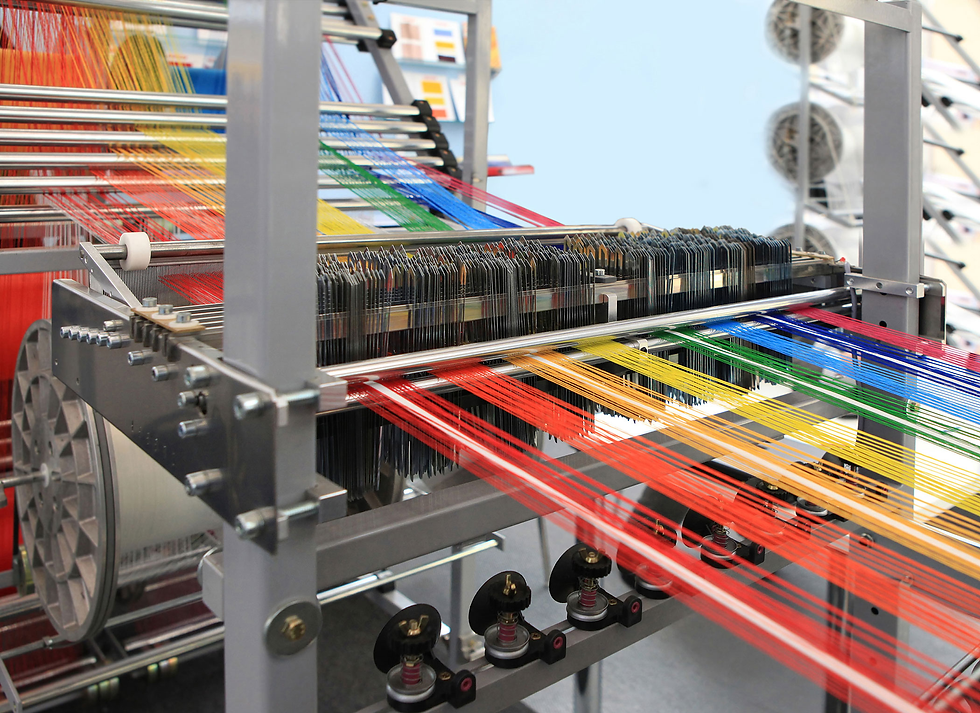How Is the Textile Industry Adapting to Modern Trends?
- Priyanka Sharma
- Apr 21
- 3 min read

The textile industry, a cornerstone of human civilization, continues to evolve with technological advancements, sustainability demands, and shifting consumer preferences. Today, more than ever, this sector faces the imperative to adapt, innovate, and integrate modern trends to stay relevant and competitive. Historically, the textile industry has been central to economic growth and cultural expression. As we move deeper into the 21st century, the industry grapples with opportunities and challenges that demand a comprehensive understanding of modern trends. Key factors like sustainability, digitization, and consumer-centric approaches are reshaping how textiles are produced, marketed, and consumed.
Sustainable Practices at the Forefront
A prominent trend in the textile industry is the growing emphasis on sustainability. Environmental concerns, coupled with consumer demand for ethical production, are driving significant changes. Sustainable practices now form an integral part of strategic planning and execution for textile firms worldwide. One notable adaptation is the increasing use of eco-friendly materials. Organic cotton, bamboo fibers, and recycled polyester are gaining traction as companies strive to reduce their ecological footprint. The push for sustainability extends beyond materials to encompass production processes. Manufacturers are implementing energy-efficient technologies, reducing water consumption, and minimizing waste through innovative recycling methods. Brands like Patagonia and Levi’s are leading the charge by introducing products with sustainability at their core, educating consumers about the environmental impact of clothing, and promoting responsible consumption. These initiatives not only appeal to eco-conscious consumers but also invest in the long-term viability of the textile industry itself.
Advancements in Technology and Digitization
Technological advancements are another transformative force in the textile industry. The integration of digital technology into textile manufacturing processes is revolutionizing the sector. Automation, artificial intelligence, and the Internet of Things (IoT) are streamlining operations, enhancing product quality, and reducing costs. For instance, smart textiles, which incorporate electronic components into fabric, are becoming increasingly popular in activewear and medical applications. These innovative textiles can monitor health metrics or adjust to temperature changes, offering value-added functionalities that cater to increasingly tech-savvy consumers. Moreover, digitization is revolutionizing the supply chain. Blockchain technology is being utilized to improve transparency and traceability in the textile supply chain, instilling trust and simplifying the tracking of products from production to consumer.
Consumer-Centric Approaches
In response to evolving consumer preferences, the textile industry is focusing on hyper-personalization and customization. The modern consumer seeks unique, tailored experiences, compelling brands to adapt their offerings accordingly. Customization technologies enable consumers to design their apparel, from selecting materials to determining style and fit, thereby increasing engagement and satisfaction. Additionally, a shift towards digital retailing is evident. The rise of e-commerce platforms has transformed how consumers shop for textiles. Online retailing allows consumers to browse a wider range of products, compare prices, and access sustainable choices, all from the comfort of their homes. Virtual fitting rooms and augmented reality applications are further enhancing the online shopping experience, bridging the gap between brick-and-mortar stores and digital channels.
Circular Economy and Innovation
The circular economy model is gaining momentum in the textile industry, focusing on minimizing waste and maximizing resource efficiency. This approach emphasizes recycling, upcycling, and reusing materials throughout the product lifecycle. Textile companies are developing innovative recycling systems to dismantle used garments and transform them into new products. Brands like Adidas and H&M are experimenting with circular models by implementing take-back programs and offering consumers the opportunity to return used clothes for recycling. These initiatives promote sustainable consumption patterns and foster brand loyalty.
Conclusion
The modern textile industry is navigating a complex landscape influenced by sustainability imperatives, technological advancements, and changing consumer dynamics. For industry players to remain competitive and sustainable, embracing these modern trends is not just desirable—it's essential. As textiles continue to serve as mediums of cultural expression and practical utility, the industry’s ability to adapt reflects its resilience and commitment to progress. By prioritizing eco-friendly practices, leveraging technology, and focusing on consumer-centric strategies, the textile industry is poised to thrive in the dynamic environment of the modern era. Ultimately, the textile industry’s journey of adaptation showcases not only its innovation and responsiveness but also its profound influence on global economic and environmental narratives.
Comments